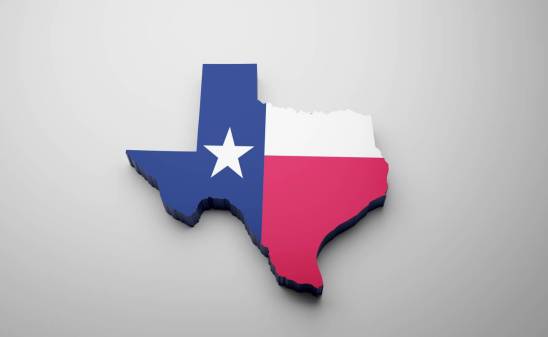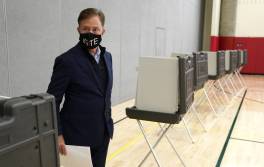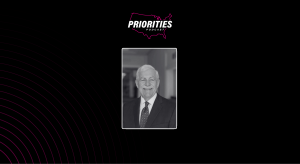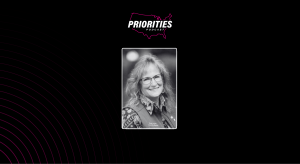Voting-rights groups announce national expansion to reach underrepresented communities

Two nonprofit, nonpartisan voting-rights organizations are expanding their efforts to register more voters, using data from public and commercial sources to target their work.
Over the next two months, the groups, the Voter Participation Center and the Center for Voter Information, said they will send voter registration applications to more than 4.7 million eligible but unregistered Americans. The groups told StateScoop they plan to conduct additional digital outreach and follow-up mailings leading into the 2026 midterm elections. The efforts will be focused on registering those often underrepresented in the voting process, such as people of color, young people and unmarried women.
To find eligible but unregistered individuals, the organizations said, they will rely on a variety of data sources and internal analyses to get updated addresses and other information.
The expansion, announced by the groups on Thursday, comes the same week President Donald Trump threatened to eliminate mail-in voting, a move that would potentially disenfranchise millions of voters, and repeated his unsubstantiated claim that voting machines are inaccurate. (The right-wing media outlet Newsmax recently agreed to a $67 million settlement with Dominion Voting Systems over false claims the network made after the 2020 election, including that the company’s voting systems had been hacked or compromised to alter the election’s outcome.)
Tom Lopach, the Voter Participation Center’s chief executive, said the groups’ expanded effort to register voters was deemed necessary in light of the Trump administration’s attacks on voting access. He said the expansion is also driven by work the center did comparing voter turnout data from the 2024 general election to monthly census numbers.
“What we’ve noticed for a number of years is progress on voter registration in underrepresented communities has been somewhat stagnant, and that in 2024, voter turnout from the communities we serve — people of color, young people and unmarried women — have reduced compared to 2022 and to 2020,” Lopach said. “So, knowing that our goal is to create an even playing field and help underrepresented populations participate in our elections, we knew it was time to run our programs nationally.”
Using data to find unregistered voters
The organizations plan to send pre-filled voter registration applications to unregistered but eligible voters in the 46 states where it’s legal to do so. The groups plan to expand their efforts in Arkansas, Colorado, Delaware, Hawaii, Idaho, Massachusetts, Rhode Island, South Dakota, Vermont and Utah.
The pre-filled applications will include information, such as names and addresses, and will also come with paid postage return envelopes. Lopach said forms will be pre-approved by state and local election offices.
For the remaining four states that have additional rules, Lopach said, the voting rights groups are planning other methods of outreach. In Hawaii, the organizations will send individuals postcards with QR codes to register online. North Dakota automatically registers its voters when they turn 18, and New Hampshire and Wyoming don’t allow voter registration through the mail. But Lopach said people in these states will still receive mailers with information about how to register.
Lopach said gathering information on would-be voters is complicated because each demographic requires a different method of approach. For young voters, the Voter Participation Center targets those that are just turning 18. He said the group works with commercial data vendors to find lists of new 18-year-olds to send them a mailers that include birthday wishes and information on how to vote.
The largest detection program the center runs it calls “current residents,” which uses commercial address data to determine how many of-age residents within a household are registered to vote. If the program spots a household member who’s eligible but unregistered, the center will send them a mailer with information on how to get registered.
“And that’s where we capture, interestingly, the most people of color, because 11% of people of color are not found in commercial datasets,” Lopach said. “And so we run a program to addresses in high people-of-color neighborhoods — that’s where we capture the vast majority of our registrants, and the vast majority of people of color we register.”
‘We should encourage all eligible voters’
Lopach said people in underrepresented communities also move twice as much as older white Americans. To identify these people, he said, the organization checks the Postal Service’s National Change of Address database. To those addresses the center sends mailers that read: “Public information indicates you have moved to a new address. You need to be registered at this address,” and center encloses the correct registration information for the new address.
Lopach said that his group’s efforts come at a crucial time: ahead of special elections this year in several states, ahead of next year’s midterm elections, and amid attacks on voting rights from Washington.
Trump’s recent attacks on voting rights arrive amid unfounded claims among Republican leaders that large swaths of illegal immigrants are voting and influencing elections. Most recently, those claims are fueling an attempt by the federal government to build a national voter database, and has led the Department of Justice to press secretaries of state to share voter rolls that contain sensitive personal information. (Several Democrats have refused, including Maine Secretary of State Shenna Bellows, who suggested the administration could “go jump in the Gulf of Maine.”)
While the Trump administration aims to remove as many voters from the rolls as possible, the Voter Participation Center and the Center for Voter Information are aiming to register voters and refocus the national conversation.
“We are a country where if you are over 18 and a law-abiding citizen, you are eligible to vote,” he said. “So to me, it seems we should encourage all eligible voters to be registered and to turn out to vote, and then allow elections to simply be a contest of ideas. Let’s not make this a contest about who gets to vote. And it seems in recent years, some folks want to make it more of a contest about who gets to vote than a contest of ideas between candidates.”






